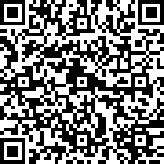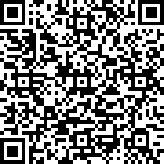
|
 |
|
Case Report
| ||||||
| Accidental foveal burn following pan retinal photocoagulation and its long-term outcome | ||||||
| Khan Perwez1, Pandey Kankambari2, Khan Lubna3, Saxena Nutan4 | ||||||
|
1MS Ophthalmology, Associate Professor, Department of Ophthalmology, GSVM Medical College, Kanpur, UP, India
2Junior Resident, Department of Ophthalmology, GSVM Medical College, Kanpur, UP, India 3MD Pathology, Associate Professor, Dept. of Pathology, GSVM Medical College, Kanpur, UP, India 4MS Ophthalmology, Associate Professor, Department of Ophthalmology, Rama medical college and research Centre, Kanpur, UP, India | ||||||
| ||||||
|
[HTML Abstract]
[PDF Full Text]
[Print This Article] [Similar article in Pumed] [Similar article in Google Scholar] 
|
| How to cite this article |
| Perwez K, Kankambari P, Lubna K, Nutan S. Accidental foveal burn following pan retinal photocoagulation and its long-term outcome. Int J Case Rep Images 2017;8(9):609–612. |
|
ABSTRACT
| ||||||
|
Introduction:
Changing lifestyle has led to rising trend of diabetes and its complications. There is an increased incidence of diabetic retinopathy with subsequent increased use of double frequency Nd:YAG lasers. Knowledge about the consequences of accidental exposure of these lasers and long-term prognosis will help us in better management of such accidents. Keywords: Double frequency Nd:YAG laser, Foveal burn, Panretinal photocoagulation | ||||||
|
INTRODUCTION
| ||||||
|
Double frequency Nd:YAG laser (532 nm), is a solid state laser which emits green wavelength. It has good absorption in the melanin of retinal pigment epithelium with high absorption in oxyhemoglobin, thereby causing direct closure of microaneurysms. Its propensity for low absorption in xanthophyll reduces risk of neuroretinal damage [1][2]. An increase in the incidence of diabetic retinopathy and other retinal vasculopathies is noted in recent years due to changes in life style and better diagnostic modalities leading to increased use of double frequency Nd:YAG lasers for therapeutic interventions. Hence there is a substantial risk of accidental exposures, whose long-term natural history is uncertain. Case report of accidental exposure of fovea to frequency doubled Nd:YAG laser burn with subsequent five years follow-up is presented | ||||||
|
CASE REPORT
| ||||||
|
Panretinal photocoagulation was advised in a 65-year-old female having proliferative diabetic retinopathy (PDR) with best corrected visual acuity of 20/125 in left eye. It was performed using a double frequency Nd:YAG Laser by a medical trainee in a medical institute. Laser was intended for nasal retina but due to misinterpretation of temporal retina as nasal retina, entire macula including fovea was lasered by high energy burns of 200 milijoules, 150 duration and 500 micrometer spot size. Immediately after the exposure, patient experienced sudden loss of vision in her left eye. Best corrected visual acuity deteriorated to finger counting at 1 foot (CF 1’) or 20/8000. Central scotoma in the affected eye was noted on Amsler grid test. Direct ophthalmoscopy and 90 D biomicroscopy revealed a circular greyish patch over the fovea and laser marks involving whole macula. Corticosteroids, in the form of 40 mg prednisolone, were administered orally for two weeks followed by 10 mg per week taper along with long-term topical nepafenac three times a day. No improvement was noted in first two weeks. Funduscopic examination at sixth month follow-up revealed a distinct epiretinal membrane which was confirmed by optical coherence tomography (OCT). Fundus fluorescein angiography (FFA) revealed multiple circular scar marks suggestive of laser treatment at macula and foveal region (Figure 1). Follow-up at weekly scheduled visits highlighted that visual recovery in affected eye was 20/200 after two months. At sixth month funduscopic examination along with an OCT revealed presence of epiretinal membrane and a prominent foveal scar (Figure 2) and visual acuity improved to 20/100. Subsequent quarterly visual acuity assessment, funduscopic photography and OCT did not reveal significant changes. Four years later, an OCT revealed spontaneous dehiscence of epiretinal membrane along with improvement in patient’s visual acuity of 20/80 (Figure 3). There was continued presence of a foveal scar with central pigmentation on fundus examination. However, neither choroidal neovascularization nor macular hole formation was evident. Best-corrected visual acuity (BCVA) improved to 20/60 at fifth year follow-up. | ||||||
| ||||||
| ||||||
| ||||||
|
DISCUSSION
| ||||||
|
Patients of proliferative diabetic retinopathy (PDR) and severe non-proliferative diabetic retinopathy (NPDR) have high risk of gross vision loss due to recurrent vitreous hemorrhage and fibro-proliferative changes consequent to neovascularization [3]. The regression of neovascularization achieved by pan retinal photocoagulation (PRP) by double frequency Nd:YAG laser reduces risk of vision loss by 50% in comparison to untreated eye [2][3]. New laser modalities, expanding delivery systems, and novel applications of laser energy have vastly expanded our armamentarium for the treatment of diabetic retinopathy. This has led to a concomitant increase in laser-induced injuries, particularly ocular injuries as energy focuses on the retina. The natural history of laser induced foveal injury remains uncertain as such type of injury is uncommon in experienced hands. However, in training institutes such mishaps can occur by trainees especially in the absence of side observer scope, as it was, in the present case. It is not unusual to observe some visual recovery in cases of laser injury in macular area outside central fovea [4][5][6]. However, our patient showed subsequent improvement in visual acuity over a period of five years despite direct injury to the fovea by high intensity PRP laser burn. Potential benefit of initial systemic corticosteroid or long term topical nepafenac in laser induced foveal injury needs to be substantiated by larger cohort studies [7]. Panretinal photocoagulation is avoided in a small oval area of macula, whose superior and inferior boundaries are formed by the respective arcades, nasal boundary by disc and temporal boundary lies two disc diameter temporal to fovea, as excessive energy of PRP burn is detrimental to its sensitive tissue. It is possible to accidently stray in this area during PRP as only a narrow strip of retina, which is to be lasered, is illuminated. So to avoid this complication one should intermittently refer back to fovea. Foveal burns can be avoided by finding the fixation point by projecting a fluorescein angiogram, using akinesia if cooperation is poor, meticulous technique and experience. Diabetic macular edema was not noted following laser therapy and no anti-VEGF (vascular endothelial growth factor) injection was required in the follow-up of last five years. Thus, emphasizing the utility of laser therapy in treatment of diabetic retinopathy. We concluded that in spite of direct laser injury to fovea, visual acuity may improve significantly in due course of time. Although surgical intervention is the main modality of treatment for epiretinal membrane, spontaneous dehiscence may occur in long duration leading to improved visual acuity. | ||||||
|
CONCLUSION
| ||||||
|
This case illustrates the importance of deep knowledge and vigorous training before laser can be handled independently. The minimal invasiveness of laser treatment has significant appeal. Nevertheless, complications are possible, but many can be avoided with meticulous technique and experience. | ||||||
|
REFERENCES
| ||||||
| ||||||
|
[HTML Abstract]
[PDF Full Text]
|
|
Author Contributions
Perwez Khan – Substantial contributions to conception and design, Acquisition of data, Analysis and interpretation of data, Drafting the article, Revising it critically for important intellectual content, Final approval of the version to be published Kankambari Pandey – Substantial contributions to conception and design, Acquisition of data, Analysis and interpretation of data, Drafting the article, Revising it critically for important intellectual content, Final approval of the version to be published Lubna Khan – Substantial contributions to conception and design, Acquisition of data, Analysis and interpretation of data, Drafting the article, Revising it critically for important intellectual content, Final approval of the version to be published Nutan Saxena – Substantial contributions to conception and design, Acquisition of data, Analysis and interpretation of data, Drafting the article, Revising it critically for important intellectual content, Final approval of the version to be published |
|
Guarantor
The corresponding author is the guarantor of submission. |
|
Source of support
None |
|
Conflict of interest
Authors declare no conflict of interest. |
|
Copyright
© 2017 Perwez Khan et al. This article is distributed under the terms of Creative Commons Attribution License which permits unrestricted use, distribution and reproduction in any medium provided the original author(s) and original publisher are properly credited. Please see the copyright policy on the journal website for more information. |
|
|






